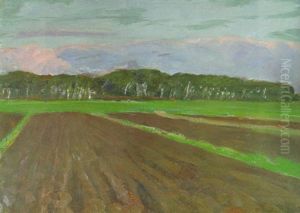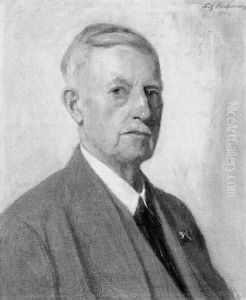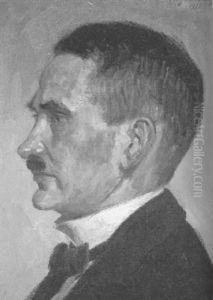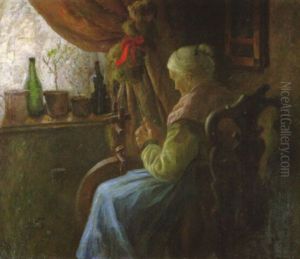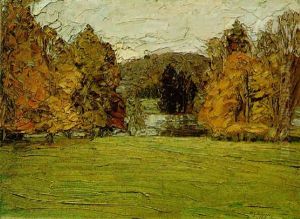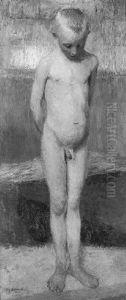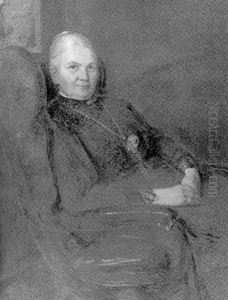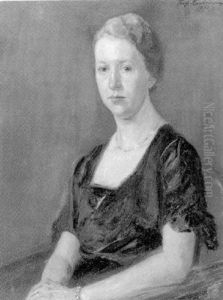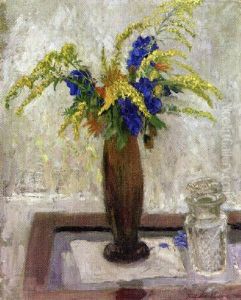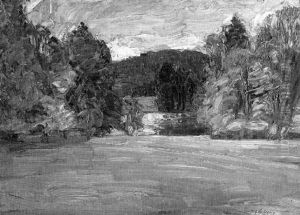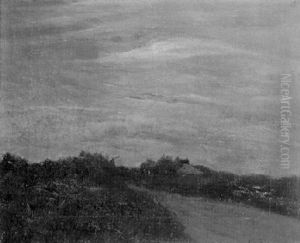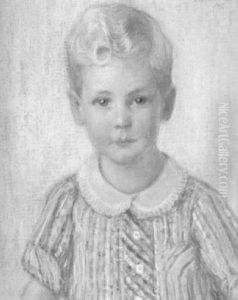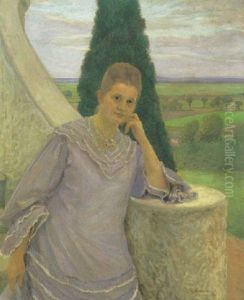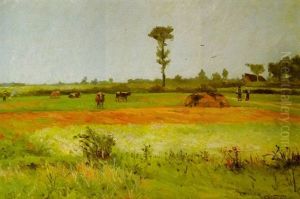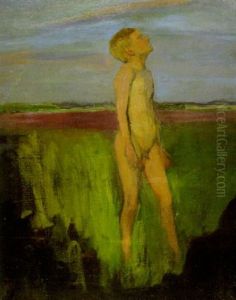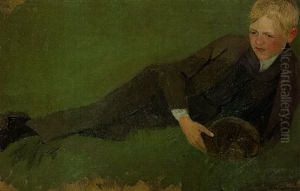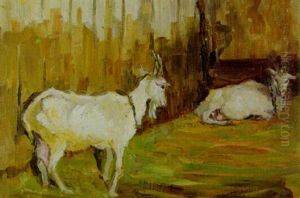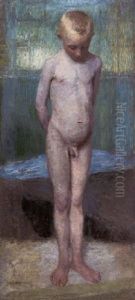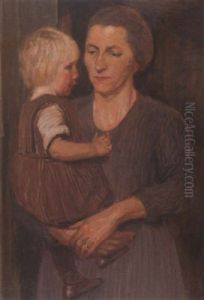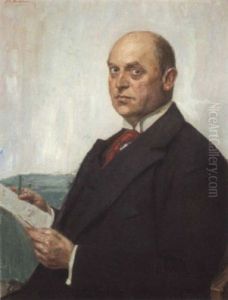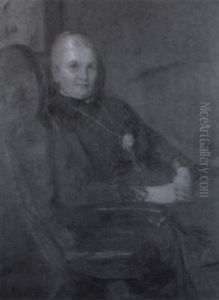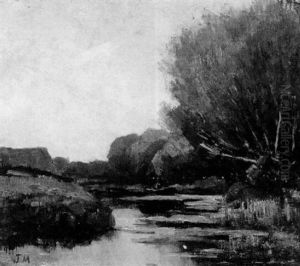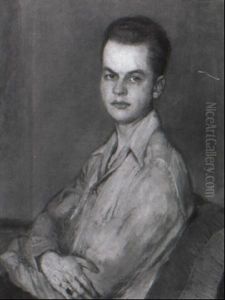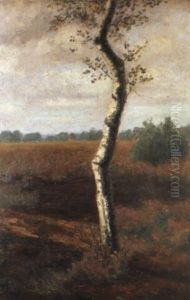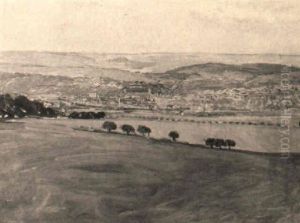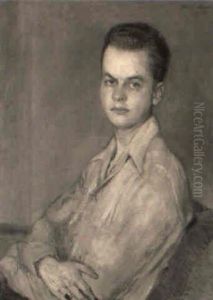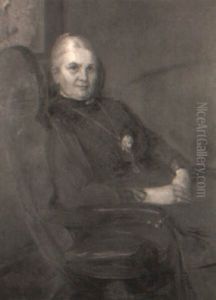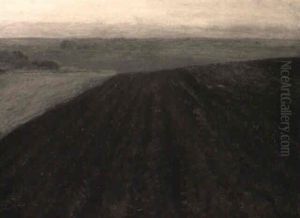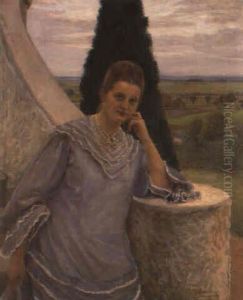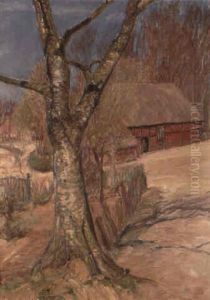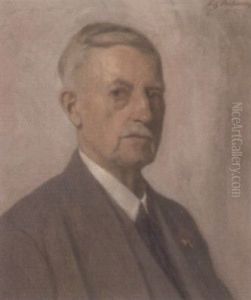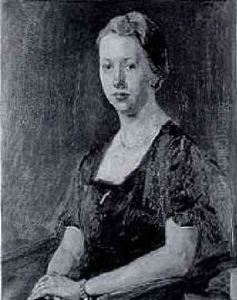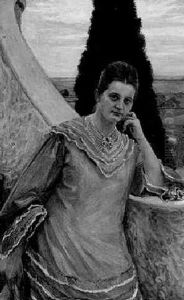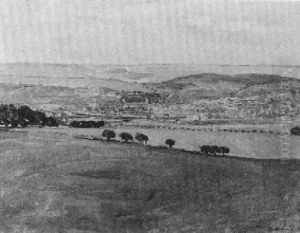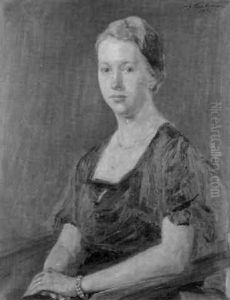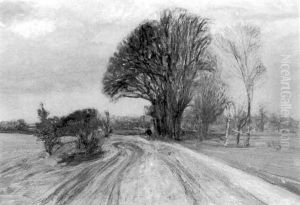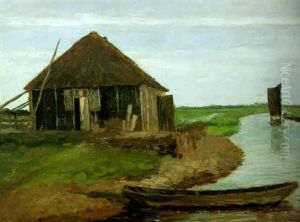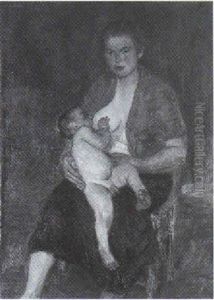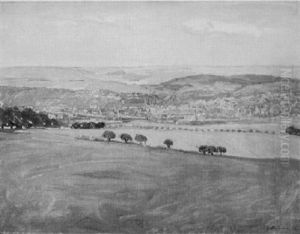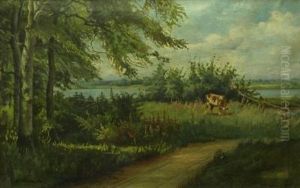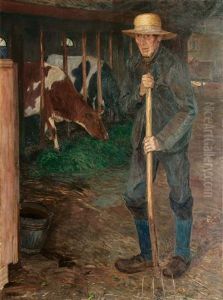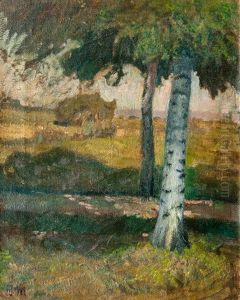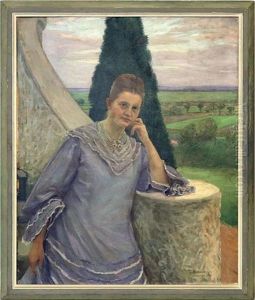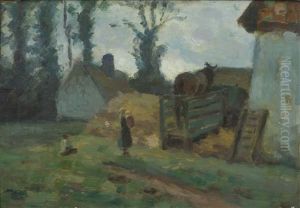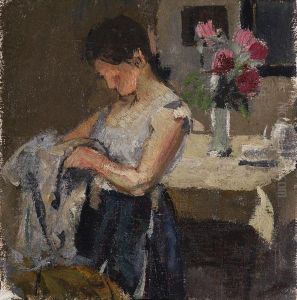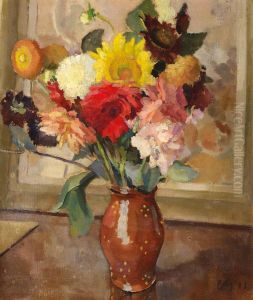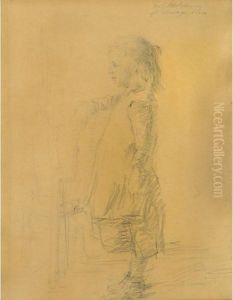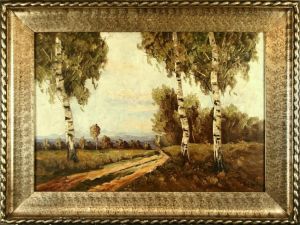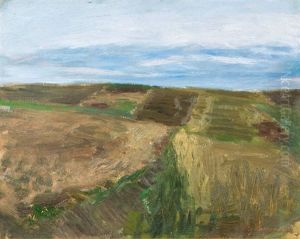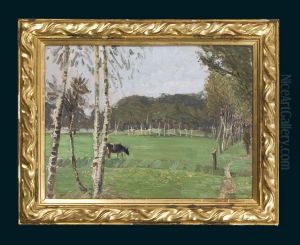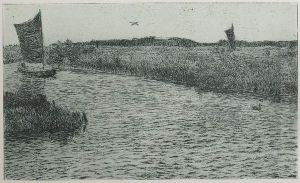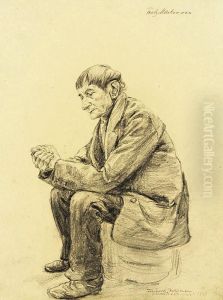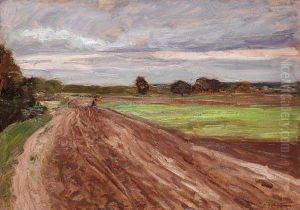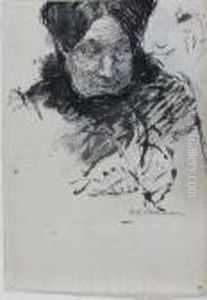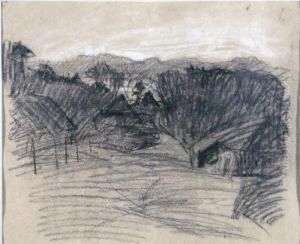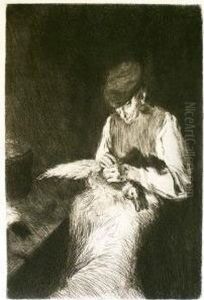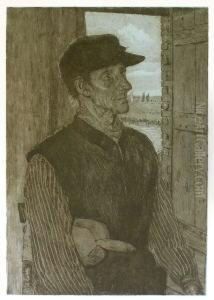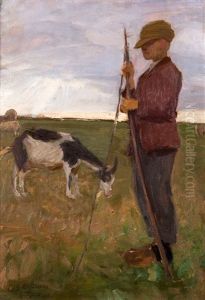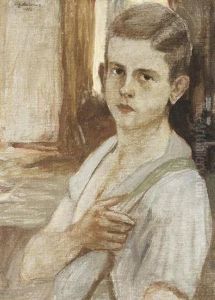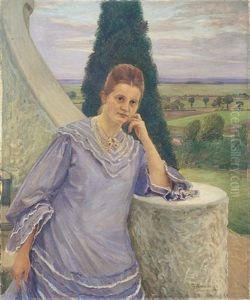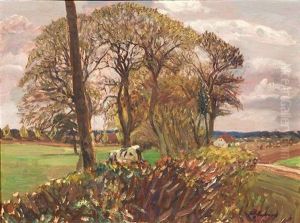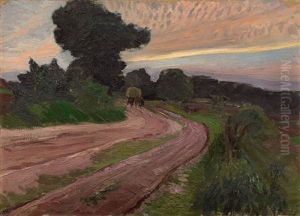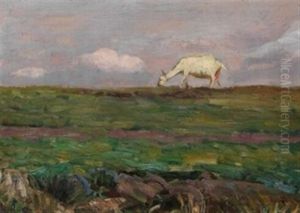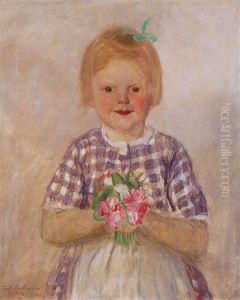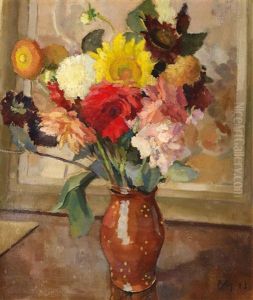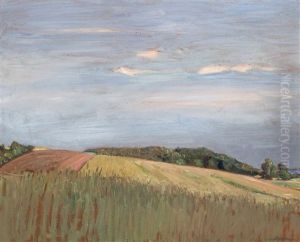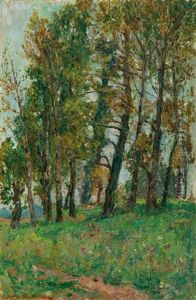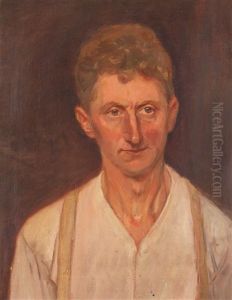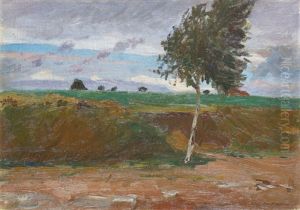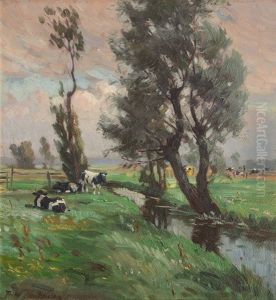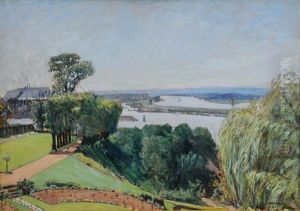Fritz Mackensen Paintings
Fritz Mackensen was a pivotal figure in the German art scene at the turn of the 20th century, primarily known as one of the founders of the Worpswede artist colony. Born on April 8, 1866, in Greene, Duchy of Brunswick, Germany, Mackensen began his artistic journey at the Düsseldorf Academy of Arts, where he was significantly influenced by the naturalist approach to painting. His early work was characterized by a strong emphasis on realism, depicting rural and peasant life with a profound sense of empathy and detail.
Mackensen's artistic trajectory took a decisive turn in 1889 when he, along with fellow artists Otto Modersohn and Hans am Ende, visited the small village of Worpswede near Bremen. Struck by the unique landscape and the ethereal qualities of the light in the moorlands, they decided to establish an artist colony there. This marked the beginning of Worpswede's reputation as a center for artistic innovation and naturalist painting in Germany. The colony soon attracted a number of other artists, including Paula Modersohn-Becker and Heinrich Vogeler, who would all contribute to the development of a distinctive style that blended naturalism with elements of expressionism and symbolism.
Throughout his career, Mackensen remained deeply committed to depicting the life and environment of the North German landscape, often focusing on the harsh realities of peasant life. His work is noted for its emotional depth and technical mastery, particularly in his handling of light and shadow, which added a dramatic quality to his scenes.
Mackensen's influence extended beyond his paintings. He was a respected teacher, holding positions at various art schools, including a notable tenure at the Weimar Academy of Fine Arts, where he contributed to the education of a new generation of artists. His teachings and artistic philosophy helped shape the direction of German art in the early 20th century, bridging the gap between the traditional approaches of the 19th century and the more modernist movements that would emerge later.
Despite his achievements, Mackensen's legacy is complex. During the Nazi regime in Germany, he was appointed president of the Reich Chamber of Fine Arts, a position that has since cast a shadow over his contributions to art due to the regime's oppressive policies towards modernist and avant-garde artists. After World War II, his affiliation with the Nazis led to a period of obscurity, and it is only in recent decades that his work and pivotal role in the Worpswede artist colony have been re-evaluated.
Fritz Mackensen died on May 12, 1953, in Bremen, leaving behind a body of work that continues to be studied and appreciated for its contribution to the development of naturalist and expressionist art in Germany.
